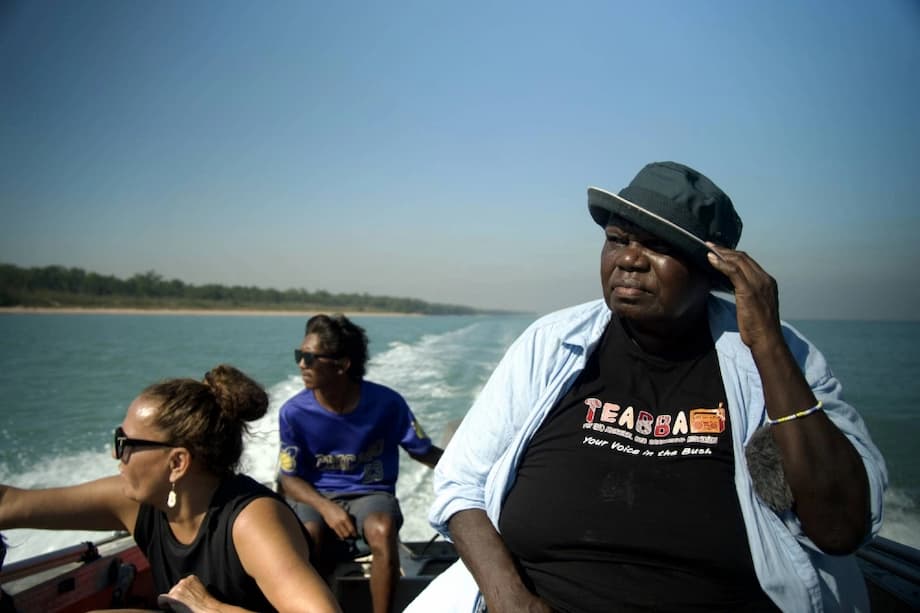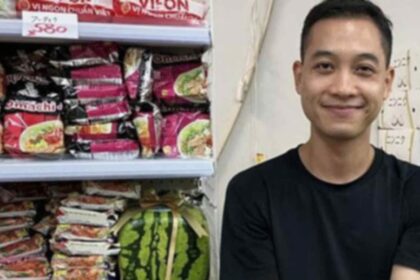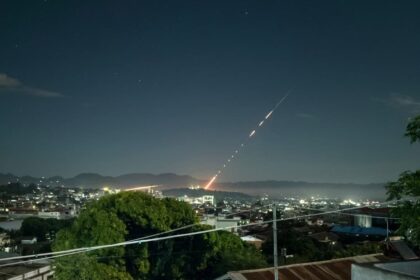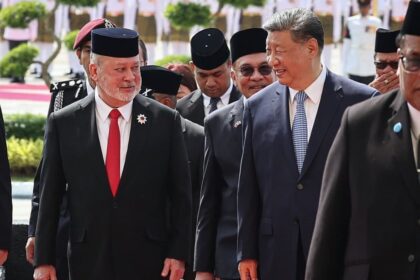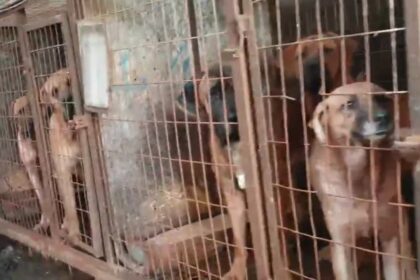A remote coastline at the center of a global gas trade
On a small boat off Melville Island, Tiwi leader Paulina Jedda Puruntatameri points toward a sweeping white sand beach that fades into the Timor Sea. The Tiwi know these waters as the domain of Ampiji, the sea serpent who guards land and ocean. The same coastal waters now sit near the route of a major gas pipeline tied to the Barossa project, a venture funded and supplied by Australian and Japanese companies that is reshaping life and livelihoods across the Northern Territory.
- A remote coastline at the center of a global gas trade
- What is the Barossa project and why it is contested
- Japan’s money and the energy security narrative
- On Country impacts for Tiwi and Larrakia communities
- Consent, consultation and the law
- Beyond Barossa: Ichthys, Beetaloo and the next wave
- Toward a reset that centers community rights and climate goals
- What to Know
For years, Tiwi families and other First Nations groups have challenged drilling at the Barossa gas field and the plan to send gas by undersea pipeline near the Tiwi Islands to the Darwin LNG plant. Their campaign has drawn in Japan, one of the world’s largest buyers of liquefied natural gas. JERA, Japan’s biggest power generator and a leading LNG buyer, holds a 12.5 percent stake in Barossa, supported by a loan of about 346 million US dollars from the Japan Bank for International Cooperation. Several Japanese utilities and trading houses are lined up to purchase LNG from the project. After regulatory approvals and a string of legal fights, the project is now close to first gas.
In mid 2025 Santos confirmed a key milestone with the arrival and hookup of the BW Opal floating production and storage vessel at the field about 285 kilometers north of Darwin. Five of six wells have been drilled, export pipelines totaling 262 kilometers are in place, and a 123 kilometer pipeline duplication to Darwin LNG is complete. The company targets first gas in the third quarter of 2025. Supporters say the project will extend the life of Darwin LNG, add jobs, and secure energy for Asia. Opponents say it threatens sacred cultural sites, marine ecosystems, and a fragile climate.
Australia has tightened domestic climate policies, yet still backs fossil fuel exports. Japan remains a critical market. Japanese buyers rely on Australian LNG for power and industry, but they also resell cargoes to other countries when prices make that strategy profitable. Last year, Australia supplied a large share of the LNG that Japanese firms resold to third countries, a sign of how commercial logic shapes energy flows. That reality gives Tokyo leverage, which it has used to seek regulatory clarity and flexibility from Canberra. Aboriginal communities along the northern coast say the pace and scale of gas development have outstripped their ability to be heard, and that the costs fall heavily on Country and culture.
What is the Barossa project and why it is contested
Barossa is an offshore gas field in the Timor Sea. Gas is piped to shore for processing at the Darwin LNG plant, which previously ran on gas from the Bayu Undan field. The Barossa joint venture promotes the resource as a world class asset that can deliver steady LNG supply to Asian customers for years.
Pipelines, permits and a swift construction timeline
Regulators accepted the offshore project plan in 2018, setting up drilling and subsea work. Legal challenges by Tiwi islanders later forced parts of the approvals to be revisited, highlighting gaps in consultation with traditional owners. Construction then accelerated again. With the offshore production unit now installed and commissioning under way, first gas is targeted for late 2025, supported by life extension works at Darwin LNG.
CO2 heavy gas and a CCS detour to Timor Leste
Barossa gas is widely described by analysts as emissions intensive. To address the carbon challenge, the joint venture proposes to capture carbon dioxide and ship it for storage in a depleted field in Timor Leste, a project often called Bayu Undan CCS. Shipping CO2 across borders and injecting it under the seabed adds cost and complexity. Even if it works at scale, significant vented and upstream emissions remain. The plan satisfies regulatory requirements on paper, but it extends project timelines and requires close oversight to ensure it performs as promised.
Japan’s money and the energy security narrative
Japan is poor in domestic oil and gas, so energy security drives policy. Tokyo’s S+3E framework (safety, energy security, economic efficiency and environment) seeks a careful balance. LNG from Australia fits that approach, supplying flexible fuel while Japan pilots green technologies. The story is not only about lights staying on in Tokyo. It is also about trade. Japanese utilities and traders now act as energy merchants, reselling some Australian LNG into regional markets when it suits. A recent analysis found that a large share of LNG cargoes that Japan resold last year came from Australia, underscoring the commercial logic attached to supply contracts.
Public finance underpins much of this trade. A civil society report said JBIC has provided 18.6 billion US dollars for fossil gas expansion since the Paris Agreement in 2016, and 3.9 billion US dollars after 2022 despite a G7 pledge to end overseas public finance for unabated fossil fuels. Campaigners argue this financing locks in emissions and exposes Indigenous and coastal communities to harm from pipelines, plants, and shipping. JBIC and Japanese officials counter that managed gas supply supports stability while green options scale up.
Japanese investors have also warned Australia that policy shifts can chill investment. At a 2023 parliamentary event in Canberra, Inpex chief executive Takayuki Ueda, whose company operates the giant Ichthys LNG project near Darwin, said price caps and regulatory uncertainty risked unintended outcomes for the region.
Mr Ueda told lawmakers that restrictive measures could backfire by driving Asia toward higher emitting fuels and by opening the door for suppliers outside US aligned markets.
“The result will be much higher global greenhouse gas emissions and will make net zero by 2050 an impossible task,” he said. “On the geopolitical front, Australia’s quiet quitting of the LNG business has potentially very sinister consequences.”
Japan’s ambassador to Australia, Shingo Yamagami, went further to frame the stakes in stark terms. Addressing the same policy debate, he warned of the scale of Japan’s reliance on Australian resources.
“It is hard to imagine the neon lights of Tokyo ever going out, but this is exactly what would happen if Australia stopped producing energy resources,” he said.
The Albanese government responded that reforms were designed to protect households and ensure domestic supply while keeping Australia a dependable exporter. Resources Minister Madeleine King reassured Japanese investors of Canberra’s intentions.
“Australia will always remain a reliable supplier of energy to Japan and a safe destination for foreign investment,” she said.
On Country impacts for Tiwi and Larrakia communities
For the Tiwi, cultural obligations begin at the shoreline and extend to the deep. The Ampiji story is not metaphor. It is a law that shapes rules for fishing, ceremony, and stewardship. Many Tiwi say they were not properly consulted on the undersea pipeline route and that a project of this size threatens sacred sites and species. Courts in recent years found consultation failings in parts of the approvals process, forcing the proponent to revisit engagement. Those legal wins did not stop the project, but they set clearer expectations for how companies must talk to traditional owners.
In Darwin, the Larrakia people face a different tangle. Onshore energy hubs promise jobs and contracts, yet past and proposed plants have consumed land with cultural significance, altered access to coastlines, and introduced heavy industry near homes. Researchers have linked living near petrochemical facilities to higher rates of certain cancers and other diseases. Communities in the Territory, where Aboriginal people make up a high share of the population, say the burden of risk falls disproportionately on them.
Industry points to benefits. Santos says Darwin LNG life extension works are creating about 300 construction and maintenance jobs in Darwin, backed by roughly 1 billion Australian dollars in investment. Operations are expected to generate about 100 million Australian dollars a year in supply and services opportunities for Territory businesses. The company says it has engaged 54 Aboriginal trainees, employees, and apprentices since 2023. The Barossa Aboriginal Future Fund plans up to 10 million Australian dollars each year for coastal Aboriginal communities for the life of the project. Early grants include a partnership with Tiwi Rangers for jobs on the islands, support for a new Larrakia Nation Art and Culture Hub in Darwin, and waste education programs in Wurrumiyanga.
Critics counter that community grants and training do not cure deep structural issues. Cultural authority, control over Country, and the right to free, prior, and informed consent sit at the heart of these disputes. Without those, many leaders say the risk is the loss of language, practices, and a way of life that has thrived for thousands of years.
Consent, consultation and the law
The right to free, prior, and informed consent, often shortened to FPIC, is a principle in the UN Declaration on the Rights of Indigenous Peoples. It means communities should be given full information about a project in a form they can use, and they should be able to say yes or no before it starts. Australia has endorsed the declaration but domestic law does not always make FPIC binding. Offshore petroleum approvals rely on a mix of regulator guidance and consultation standards that courts have sometimes found wanting.
When Aboriginal organizations argue that engagement was rushed or incomplete, companies often counter that they met the letter of the law. Recent legal cases in the Barossa approvals highlighted exactly this clash, forcing fresh rounds of consultation. The episode revealed a broader problem. Big projects do not happen in isolation, yet approvals tend to look at one permit at a time. For coastal communities carrying the combined weight of pipelines, export terminals, and heavy industry, it feels like a penalty for living next to an energy corridor.
The tension is not unique to Australia. A global review found more than half of energy transition minerals sit on or near Indigenous lands. Allegations of rights violations, weak consultation, and environmental harm have been widespread. Industry groups say they are raising standards. Independently audited frameworks like the Initiative for Responsible Mining Assurance have emerged to provide firmer checks. Some partnerships now include equity stakes for First Nations organizations, giving communities a seat at the table and a share in returns. Those models are uneven, but they show a path to more durable agreements.
Beyond Barossa: Ichthys, Beetaloo and the next wave
Darwin already anchors one of the world’s major LNG chains. The Ichthys project, operated by Inpex, discovered in 2000 and sanctioned in 2012, began production in 2018. It includes subsea wells, offshore processing, an 890 kilometer pipeline to onshore facilities near Darwin, and large storage and export capacity. At peak, Ichthys has run near 9.3 million tonnes per year of LNG and 1.65 million tonnes of LPG, with significant condensate output shipped directly offshore. Japanese utilities are minority investors in Ichthys, deepening the long relationship between Tokyo and the Territory.
New projects are lining up. In the Beetaloo Sub-basin south of Darwin, companies are exploring shale gas through hydraulic fracturing. Traditional owners and pastoralists worry about groundwater contamination, chemicals, and inadequate transparency in agreements. Community groups say many Aboriginal families have not been fully informed about how fracking works and what it could mean for water, food, and sacred places. At the same time, the Northern Territory government has signed cooperation agreements with Japanese agencies to advance energy projects. A territory coordinator with a background in gas has been appointed with broad powers to shepherd projects, a move that locals say tilts decisions toward development.
There is also the climate ledger. Scientists warn that LNG plants have a larger carbon footprint than many assume, due to upstream methane, processing, and shipping. Emissions from existing facilities have at times exceeded early estimates. If Barossa proceeds at scale, and Beetaloo follows, the Darwin region will carry a growing share of Australia’s fossil fuel emissions, testing the Safeguard Mechanism and state targets. The CCS plan for Barossa could cut some emissions if it works as designed, but it will not erase them.
Toward a reset that centers community rights and climate goals
Analysts tracking the Australia Japan energy partnership warn of a widening mismatch. Tokyo wants flexibility across LNG and a staged path for green fuels. Canberra wants early commitments for large, untested green commodity projects and stable investment in LNG. Each side worries the other will change rules midstream. One forum urged both governments to craft a shared narrative that links LNG and green supply under the same risk and standards framework, reinforced by the NARA Treaty as it approaches its 50th anniversary in 2026. The idea is simple. Certainty for investors comes from credible rules, consistent approvals, and aligned certification standards, not from quick deals.
For communities in the Northern Territory, credibility will be judged in daily practice, not communiques. Steps that would build trust and reduce conflict include:
- Guaranteeing free, prior, and informed consent in law for offshore and onshore projects, with independent oversight.
- Requiring cumulative impact assessments that look across overlapping pipelines, plants, and shipping corridors, not just single permits.
- Embedding cultural heritage protections into binding conditions, with Indigenous ranger programs funded for the long term.
- Sharing revenues transparently, including community equity stakes where traditional owners choose them.
- Setting hard emissions limits for projects, with verified methane measurement and clear consequences if thresholds are breached.
- Testing carbon capture plans against independent performance milestones before allowing production volumes to ramp up.
- Funding independent health monitoring for communities near petrochemical and LNG facilities.
Japan has the financial weight to shape outcomes. If public finance and buyer contracts demand gold standard consultation and climate conditions, projects in the Territory will change. Australia has the policy levers. If approvals link supply security to stronger community rights and cleaner pathways, investor risk falls and social legitimacy rises. Together, those shifts would position both countries to steer LNG down and scale green supply up, without pushing First Nations to the margins.
The pressure to do so is growing beyond Australia. From Alaska to British Columbia, Indigenous leaders and climate advocates are challenging banks and governments that continue to bankroll new fossil fuel projects. Global campaigns aimed at public lenders like JBIC are gaining strength. The message is consistent. Community consent, health, and culture are not peripheral. They are central to any energy system that claims to be just.
What to Know
- Barossa LNG, with Japanese investor JERA at 12.5 percent and a JBIC loan, is nearing first gas with offshore facilities installed and pipelines complete.
- The project routes gas to the Darwin LNG plant and includes plans to capture and ship CO2 for storage in Timor Leste, adding cost and complexity.
- Tiwi and Larrakia leaders say consultation has fallen short and that cultural heritage, sea Country, and community health face growing risks.
- Santos highlights jobs, local procurement, and a Barossa Aboriginal Future Fund of up to 10 million Australian dollars a year for coastal communities.
- Japan frames LNG as energy security under its S+3E policy, while civil society reports criticize JBIC for 18.6 billion US dollars in gas finance since 2016.
- Japanese utilities also resell Australian LNG to third countries, underscoring the commercial role of LNG trade beyond domestic supply.
- Ichthys LNG, operated by Inpex, shows the scale of Japanese backed gas in the Territory, while Beetaloo fracking plans raise new water and consent concerns.
- Analysts call for a shared Australia Japan narrative that aligns rules for LNG and green fuels, backed by stable approvals and standards.
- Key fixes include binding FPIC, cumulative impact assessments, stronger heritage protections, community equity options, and firm emissions caps with real enforcement.


